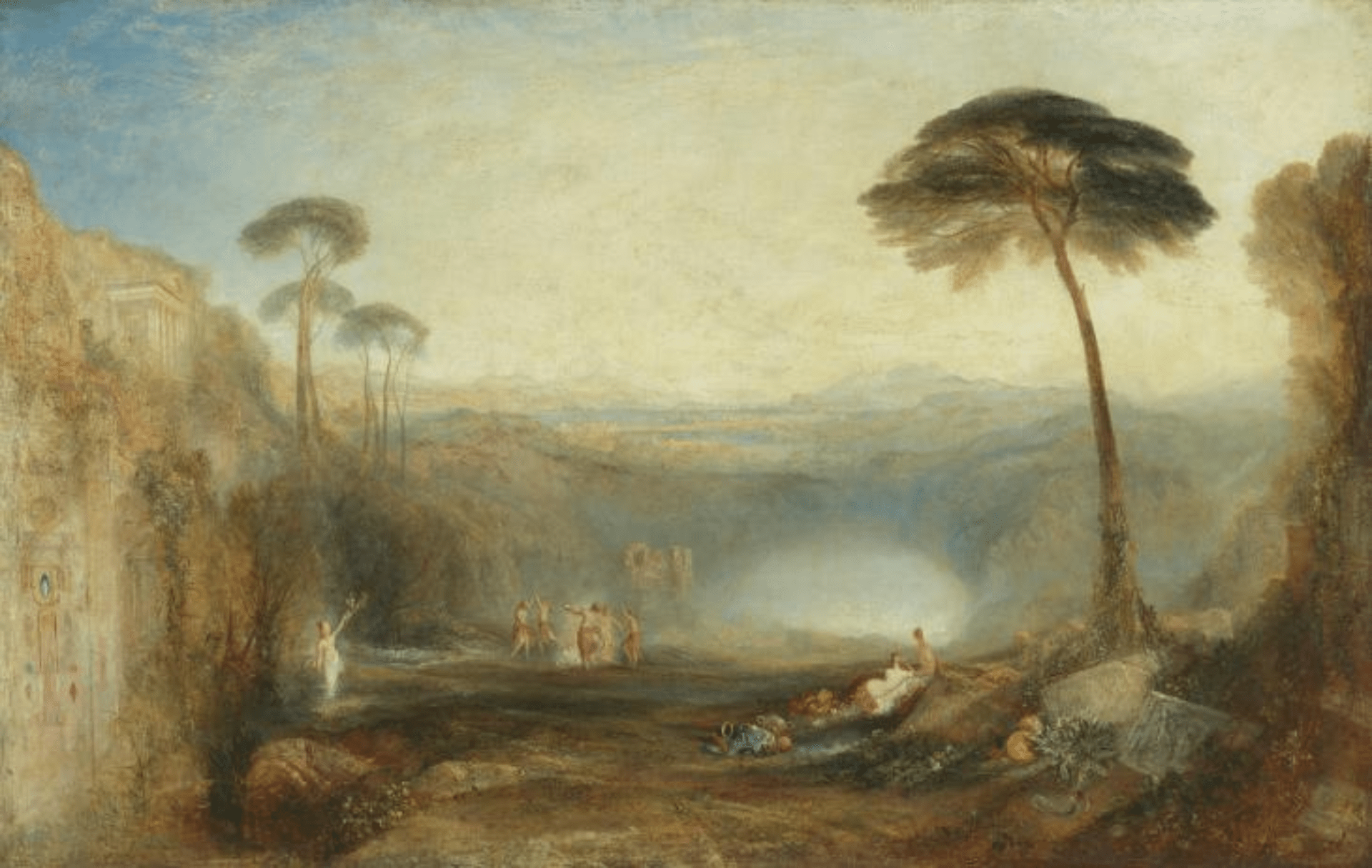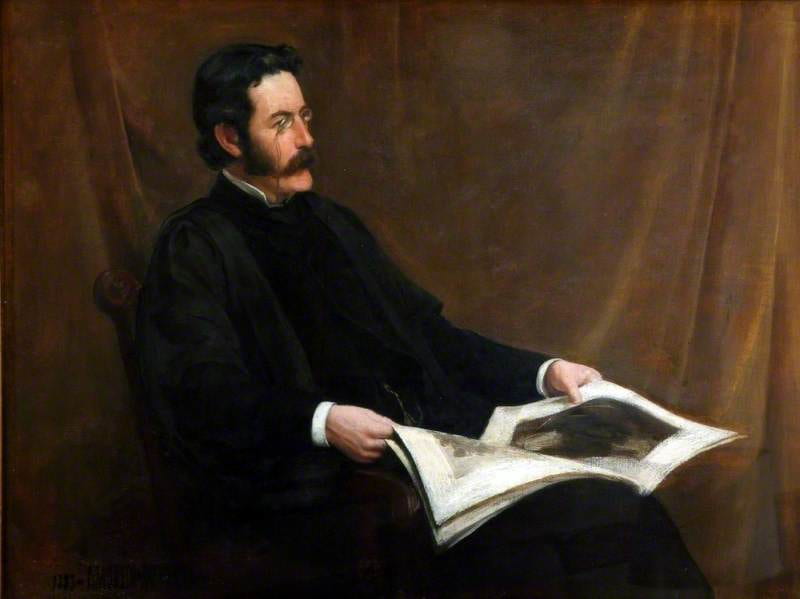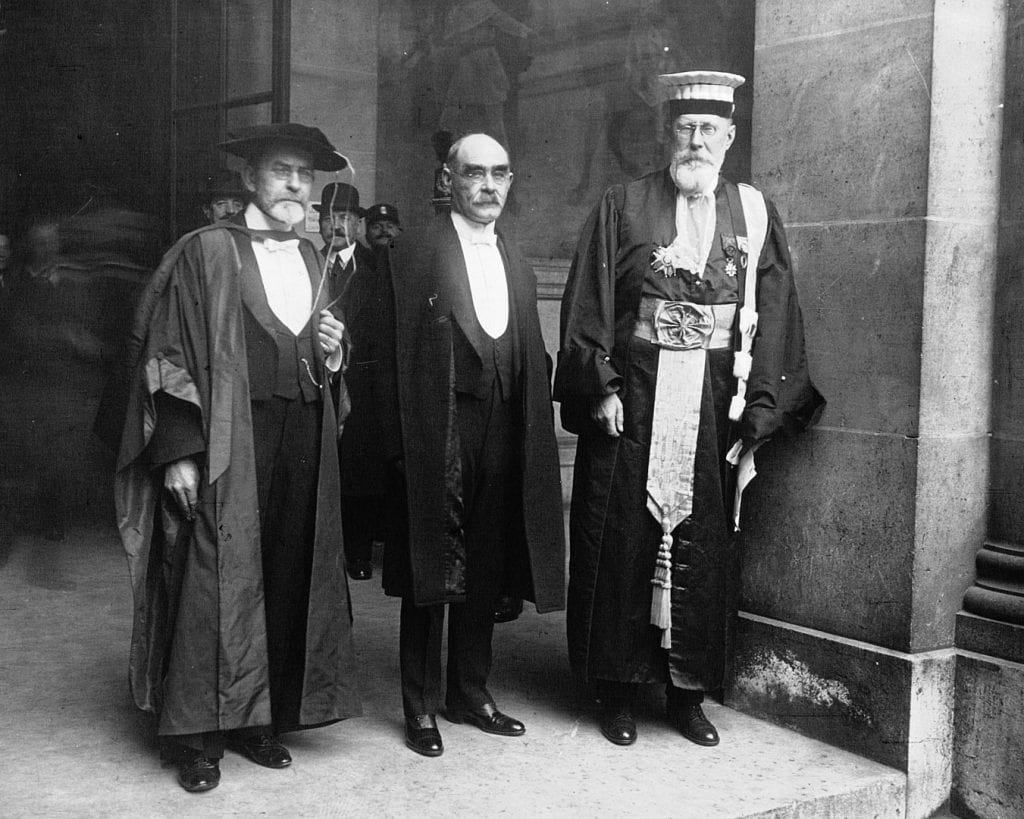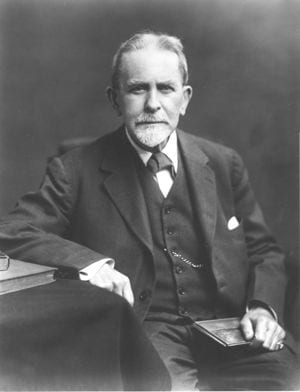
Revisiting Frazer’s Golden Bough
In February 2023, Dr Caroline Tully, archaeologist and honorary fellow in SHAPS, and Dr Stephanie Budin, ancient historian and independent scholar, hosted the international conference Shaking the Tree, Breaking the Bough. Designed to interrogate the influence of Sir James G Frazer’s (1854–1941) magnum opus, The Golden Bough: A Study in Comparative Religion, first published in 1890, on the study of ancient religion, the conference was timed to coincide (roughly) with the centenary of the publication of the abridged edition in 1922. Caroline Tully reports on the conference proceedings below.
James G Frazer’s influence on scholarship and popular culture is both pervasive and enduring. As Stephanie wrote in the conference Call for Papers, over the past century we have learned to scorn the overblown theories of this Victorian-era historian of ancient religions, dissecting the flaws in his methodology, noting his inaccuracies, and criticising his overly universalising tendencies. At the same time, however, we continue to analyse data pertaining to religions both ancient and modern exactly according to his tenets: Minoan Mother Goddesses, Near Eastern sacred prostitution, persistent beliefs about the existence of ancient matricentric Pagan religions embodied in so-called fertility figurines—all hail from the pages of Frazer’s openly discredited volume.
Both Stephanie and I have long been frustrated with the blithe and often unthinking adherence to Frazer’s ubiquitous concepts within the study of ancient religion and related disciplines. We felt that that it was time to reevaluate his influence within academia, particularly the humanities, and especially the study of the ancient world. In our Call for Papers we asked provocative questions such as: Why is every goddess imagined as a fertility goddess (even the warrior goddesses)? Why is temple prostitution still considered to be a staple of Mediterranean cult practice? And, how clear or warped is the lens through which the adherents of modern Pagan religions perceive their ancient antecedents and models?

Looking at the influence of Frazer also prompted us to ask ourselves to what extent religious studies and related disciplines like History, Classics, Assyriology, and Literary Studies have been unduly and continuously (if unconsciously) influenced by other ‘trendy’ notions of the past and present. What ‘theories’ are really just habits, nostrums passed down through the generations? How can we tell? And, perhaps most importantly, how can we develop methodologies aimed at solving this problem? These were the sorts of questions that we hoped would be tackled by scholars in our online international conference, Shaking the Tree, Breaking the Bough: The Golden Bough at 100.
We had a fabulous response to our Call for Papers, and subsequently structured the conference into five thematic categories: Setting the Scene; Assyriology and Biblical Studies; The Aegean and Mediterranean; Pagan Considerations; and Into the Present/Theory. The conference had twenty-five papers.
Professor Tim Parkin, the Tatoulis Chair of Classics at the University of Melbourne, opened Day 1 with an assessment of Frazer’s influence on the discipline of Classics, reminding us that Frazer actually was a Classicist as well as being an early social anthropologist.
Professor Ronald Hutton from Bristol University, the first keynote speaker, gave a fascinating presentation on the themes of Frazer’s life, how these affected the content of The Golden Bough, and whether any of his ideas are still relevant today. Additional keynotes for subsequent sessions were delivered by Professor of Assyriology at the University of Helsinki, Martti Nissinen, on the sexual agency of the goddess Ištar in Akkadian love literature; Christine Morris, the Andrew A. David Professor of Greek Archaeology and History in Trinity College Dublin, who explained the influence of Frazer on Sir Arthur Evans, excavator of the Bronze Age palace of Knossos on Crete; Dr Cynthia Eller of Claremont Graduate University and Montclair State University (retired), who analysed Frazer’s impact on beliefs within Aegean archaeology about ancient matriarchy; and anthropologist at Goldsmiths University of London, Dr Helen Cornish, who presented on Frazerian survivals within contemporary witchcraft. Dr Stephanie Budin wrapped the conference up with the last keynote about the fads that drive us: from Frazer, Freud, and Foucault to Butler and Connell.
The papers within each thematic sub-section were fascinating. Paper presenters were a mix of established scholars and graduate students. In ‘Setting the Scene’, first to speak was Frederico Rosa from NOVA University in Lisbon on the German mythologist and folklorist, Wilhelm Mannhardt’s ideas about forest and field cults and how these influenced Frazer’s ideas about tree spirits in The Golden Bough; Julia Phillips, a historian at the University of Bristol, then looked at how Frazer and The Golden Bough were promoted beyond academia to a popular audience through the Victorian and Edwardian popular press; and the session finished with Alessandro Testa, associate professor in the Faculty of Social Sciences, Charles University, Prague, who examined ‘popular Frazerism’ and re-enchantment in contemporary European folk festivals.

In the ‘Ancient Near East and Biblical Studies’ sessions, we began with Assyriology PhD student Nadia Linder from the University of Vienna, who looked at concepts formulated by Frazer that are still in use in the study of ancient Mesopotamian religion and mythological literature; Paola Corrente, researcher in the history of religion at the University of Salerno, examined the Frazerian dying and rising god model within Mesopotamian mythology; and JoAnne Scurlock, an Assyriologist from the Oriental Institute of the University of Chicago, explained how Mesopotamian dying and rising divinised mortals and planetary gods are far more interesting and complex than simple signifiers of ‘fertility’ as per Frazer.
We then turned to the biblical text and the topic of the scapegoat, with Caroline Smith, a PhD student at the University of Winchester, demonstrating that the scapegoat in the Hebrew Bible is much more complicated than Frazer suggests. The session ended with Ryan Chester, a PhD student from King’s College London, looking at the ongoing influence of Frazer’s Golden Bough in Biblical Studies and the humanities.
Participants in the ‘Aegean Implications’ session included Bernice Jones from the Institute of Fine Arts, New York University, who talked about the uncritical use of Frazerian models of mother goddesses and youthful male gods in the interpretation of a Mycenaean ivory figurine group; and independent scholar Stephen O’Brien, who analysed ideas of Minoan matriarchy as presented in the recent popular book by David Graeber and David Wengrow, The Dawn of Everything.

In the ‘Mediterranean’ section we began with Isabel Köster, assistant professor of classics at the University of Colorado Boulder, who interpreted dedications to nymphs by Roman soldiers in Britain from both a Frazerian angle and an ancient Roman perspective, comparing the two. This was followed by University of Melbourne PhD candidate, Larissa Tittl, who looked at the presence of Frazerian tropes within mid-twentieth century novelist Mary Renault’s popular fiction; and the session ended with Saskia Moorees, MA candidate at Monash University, who assessed the usefulness of Frazer’s categorisation of the practice of magic, in this case his ‘sympathetic law of similarity’ in regard to the study of Graeco-Roman defixiones (curse tablets).
‘Pagan Considerations’ looked at the reception of ideas from Frazer’s Golden Bough within contemporary Pagan religions. My paper focused on Frazer’s interpretation of the ancient Roman goddess Diana and her priest, the Rex Nemorensis, at Diana’s sanctuary at Nemi in Italy and how this has been used by contemporary Italian-American Pagans; Ive Brussman from Lund University in Sweden then looked at Frazer’s discussion of tree spirits and contemporary Druids’ ‘new animistic’ relationship to tree spirits within the current ecological crisis; and the final paper in this session was by Vanessa Lavallé, a PhD student in religious studies at the University of Quebec, who examined the interpretation of the ancient Mesopotamian demoness Lilith by modern Francophone Pagans in Montreal.
Laurel Zwissler, professor of Religion at Central Michigan University, was the first speaker in the final session: ‘Into the Present/Theory’ with her paper on race, the academic study of religion, and The Golden Bough; followed by the final paper of the conference by Fritz Lampe, senior lecturer from Northern Arizona (retired) speaking about Frazer and the concept of ‘contagious magic’ and the magical oath.

As is evident from these brief descriptions of the keynotes and papers, the conference was interdisciplinary and included content that spanned a broad geographical and chronological swathe. Not only were the topics presented of scholarly interest and relevance – presenters constantly remarked how much they were learning from scholars in other disciplines – the participants were refreshingly international, as was the audience, although it was limited to English speakers.
There were very stimulating discussions after each paper and it became increasingly obvious – and interesting – that concepts taken for granted within these disciplines, and still used, although not cited because they are often just assumed to be ‘true’ or at least common knowledge, actually originated with Frazer. Participants frequently expressed a sense of revelation at the ubiquitous presence of Frazer’s often erroneous ideas still present and taken for granted within their own disciplines and wider contemporary academic research. This was exactly what Stephanie and I were aiming to do through focusing on this incredibly influential behemoth of a book.
Conducted via Zoom, the conference was inexpensive to run – the School of Historical and Philosophical Studies funded an Events IT specialist so that Stephanie and I could focus on running the conference rather than having to also operate the technology, which was a great help. The conference was open to the public as well as academics (over 140 people registered), so it was a great example of engagement, especially because Frazer’s work entered popular consciousness in the early twentieth century, particularly with the publication of the abridged edition of The Golden Bough (which has never been out of print), to such an extent that it forms a subconscious structure to many popular ideas about ancient religion, myth and folklore. In addition to deconstructing Frazer, the conference also showcased ancient world and historical disciplines to the public, something which we believe should be more common, particularly to counter the absolutely chronic misinformation on television, social media and the internet.
The conference presentations were recorded and uploaded to a private YouTube channel so that people who had to sleep or otherwise not attend the live conference (that primarily catered to a northern hemisphere timetable) would be able to see the ones they missed. The videos will be archived in the New Age Movements, Occultism and Spiritualism Research Library (NAMOSRL) Archives held in the Odum Library at Valdosta State University. Before the conference had even begun, we received expressions of interest in publishing the proceedings from three academic presses, and are now working on a book proposal with Lockwood Press. Stephanie and I would consequently like to express our thanks to Professor Tim Parkin for championing our conference, the School of Historical and Philosophical Studies at the University of Melbourne for supporting it, and Basil Motta from University Events IT for his help with technology.